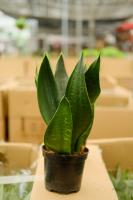Introduction
The water cycle is the process by which water continuously moves from the Earth's surface into the atmosphere and back again. It is essential for maintaining the Earth's ecosystems and providing fresh water for human consumption. Two key components of the water cycle are oceans and plants. In this article, we will explore why oceans and plants are important to the water cycle.
Oceans and the Water Cycle
Oceans play a crucial role in the water cycle. They cover more than 70% of the Earth's surface and contain about 97% of the Earth's water. The sun's energy heats the surface of the ocean, causing water to evaporate and form water vapor. This water vapor rises into the atmosphere, where it cools and condenses into clouds. Eventually, the water in the clouds falls back to the Earth as precipitation, such as rain, snow or hail. A large portion of this precipitation falls over the oceans and re-enters the water cycle, while the rest falls over land and becomes freshwater.
In addition to contributing to the water cycle, oceans also help regulate the Earth's temperature and weather patterns. As water warms near the equator, it moves towards the poles, carrying heat with it. This helps to distribute heat across the planet and regulate global temperatures. Additionally, ocean currents affect weather patterns by carrying warm or cold water to different areas, which can influence the formation of storms and other weather events.
Plants and the Water Cycle
Plants are also an important component of the water cycle. They play a critical role in the process of transpiration, which is the release of water vapor from plant leaves. As plants absorb water through their roots, the water is transported to the leaves where it is released into the air as water vapor. This water vapor then contributes to the formation of clouds and precipitation, ultimately returning to the Earth's surface as freshwater.
In addition to contributing to the water cycle, plants also help regulate the Earth's climate. Through the process of photosynthesis, plants absorb carbon dioxide from the atmosphere and release oxygen. This helps to balance the levels of carbon dioxide in the atmosphere, which is important for maintaining the Earth's climate and preventing global warming.
Conclusion
Oceans and plants are essential components of the water cycle, playing critical roles in maintaining the Earth's ecosystems and providing fresh water for human consumption. By understanding their importance, we can work towards protecting these vital resources and ensuring their sustainability for future generations.

 how many times do yo...
how many times do yo... how many planted tre...
how many planted tre... how many pine trees ...
how many pine trees ... how many pecan trees...
how many pecan trees... how many plants comp...
how many plants comp... how many plants can ...
how many plants can ... how many plants and ...
how many plants and ... how many pepper plan...
how many pepper plan...































